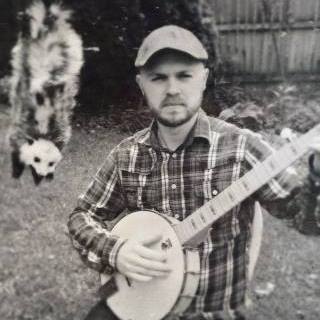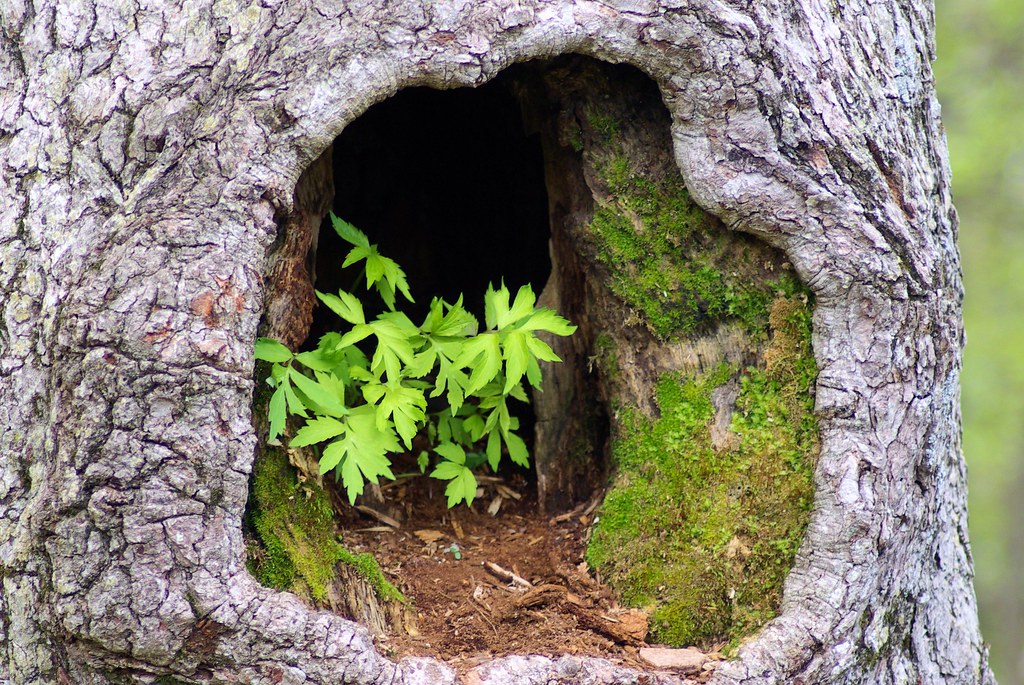by Mike Templeton
An important part of research in Appalachian studies is in the areas of folklore and folk history. Appalachian State University, for instance, has an entire folklore section as part of their Appalachian Studies program. The Urban Appalachian Community Coalition also takes an active interest in folklore. This is why we brought you the story of Tailypo. To write about Tailypo, I had to dig up several sources since the origins of this story are murky at best and because there are so many versions of the tale. One of my main sources is a folklorist named Luke Bauserman who published his own version of Tailypo in his newsletter “The Weekly Holler.” Bauserman has much more to offer in the fields of Appalachian folklore and history.
Luke Bauserman may seem like an unlikely person to emerge as an Appalachian folklorist and historian. He makes his living as a dentist. But it was during his years in dental school that he took an active interest in folklore, and it simply made sense to begin with the folklore of the world he comes from. As Bauserman explains: “I have always loved folklore. When I was in dental school, I needed a creative outlet, so I started a newsletter on folklore. This became ‘the Weekly Holler.”

Originally from Muskingum County, Luke Bauserman grew up in Appalachian Ohio. But it was a few years of living away that made it possible to see his home as something worthy of study. “We moved away when I was about nine or ten, and then came back. This gave me something of an outsider’s perspective on my hometown. I began to see it as something to explore,” he told me. It was this outsider’s perspective that offers so many Appalachians the realization that they are, in fact, Appalachian. This was the case for Bauserman, and this fresh view of Appalachian Ohio led him to expand his explorations into folklore beyond the confines of conventional folklore.
Bauserman’s research into Appalachian Ohio and the folklore of surrounding Appalachian counties have turned up some fairly astounding stories. His research expanded so much that the newsletter form grew into a YouTube channel called “American Mythology.” One episode details the history and folklore from Ohio and the broader Appalachian areas that reveal a substantial history of people living in hollow trees. These are historically verifiable cases of real people who took up residence in hollow trees. From fugitive slaves and soldiers in need of shelter to just plain oddballs who made the best of the old-growth trees that could reach diameters of more than eight feet at the base, people in and around Appalachia have made their homes in hollow trees.
One case was a man named George Burkhart who crossed into Harlan County in 1791, took shelter from a storm in a hollow tree, and decided to make this tree his home. Burkhart was also said to be a witch doctor who lived to be 125. The lore is that he married his fourth wife at the age of 110. Another resident of a hollow tree is closer to home. Ida Martin was a washerwoman for Fort Washington. Her name was once memorialized in Cincinnati after a neighborhood was named in her honor: Mt. Ida. This was later changed to Mt. Adams. Our own Mt. Adams was originally named for an inhabitant of a hollow tree.
American Mythology traces all sorts of historical oddballs. My personal favorite is the story of Gabriel Littlepage. This is the folktale/historical tale of a lonely hermit who lived in the woods surrounding Kanawha River Valley. Littlepage occasionally emerged in town with his canine companion, who some claimed was a wolf, dressed in untanned deer hides. After trading for salt and gunpowder, Littlepage would disappear back into the woods. The remains of Gabriel Littlepage and his dog companion were found at the site believed to be Littlepage’s camp home. Stories persist in the region of Littlepage’s ghost, but the man and the site of his camp are long gone. The town of Gabe, named after Littlepage, is just over the Roane County line, approximately twenty-eight miles north of Charleston. As much as Bauserman identifies with those who made homes in hollow trees, I have always admired and feared the isolated loner—the individual who cuts him or herself off from the world to seek a life in isolation. I suspect part of my fascination with Samuel Beckett comes from this idée fixe.
Luke Bauserman’s deep dive into American folklore and folk history has revealed a literal skeleton in a closet, a town that makes the Hatfields and the McCoys, and even his own family history in a coal mine in the Cumberland Gap area, appear tame. You can watch all of these stories on American Mythology. Perhaps the most significant about Luke Bauserman’s work is that he is not a professional folklorist or historian. This is not to knock scholars of folklore or history, but to draw attention to the fact that it is people like Bauserman who are inspired to find these stories and present them to us because they are simply enchanted by their Appalachian heritage and the Appalachian places that give us these stories. This is certainly in the spirit of the Urban Appalachian Community Coalition which is made up of professional scholars, poets, writers, and artists, but also people who simply love our Appalachian heritage and culture and work to preserve and sustain this heritage and culture. The magic of Appalachia is there to be found, and Luke Bauserman has taken the extra steps to present some of this magic for all of us.
Luke Bauserman’s American Mythology can be found at this link: https://www.youtube.com/c/AmericanMythology.
Luke Bauerman’s dental practice can be found at this link: https://www.familytreedentist.com/?fbclid=IwAR2RBs_xd97ygyxf3-SmNeGZdmh-ksGooAkkD_-mD4wYiiHdi4IvsN9GWyA.
Mike Templeton is a writer, independent scholar, barista, cook, guitar player, and accidental jack-of-all-trades. He is the author of the forthcoming The Chief of Birds: A Memoir. Available later this year from Erratum Press. Check out his profile in UACC’s new Cultural Directory. He lives in downtown Cincinnati with his wife who is a talented photographer. They spend their free time walking around the city snapping photos. She looks up at that the grandeur of the city, while Mike always seems to be staring at the ground.

